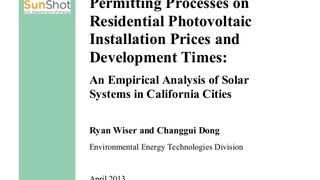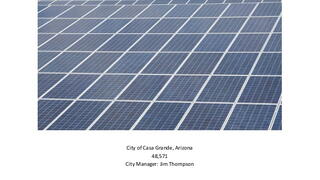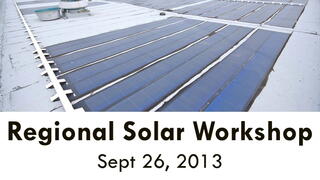
Matt Krusemark, Information Services Manager at the Denver Regional Council of Governments (DRCOG) joined the National Association of Regional Councils to discuss DRCOG’s solar map project. Learn more about the technologies and techniques DRCOG used to create this user-friendly method to find out a building’s solar pv potential in the Denver, Colorado region.

Rich Deming, Senior partner at Calor Energy and Walter Putnam, partner at Shift Equity, joined the National Association of Regional Councils (NARC) to explain Renewable Energy Certificates. Join Rich and Walter to learn about how local governments can utilize Renewable Energy Certificates as easily as private entities.

This interactive workshop, was presented by the SunShot Solar Outreach Partnership on April 30, 2013 in Memphis, TN.
Matt Krusemark, Information Services Manager at the Denver Regional Council of Governments (DRCOG) joined the National Association of Regional Councils to discuss DRCOG’s solar map project.

The Impact of City-level Permitting Processes on Residential Photovoltaic Installation Prices and Development Times

The City of Casa Grande has completed its first ever solar photovoltaic project.

This interactive workshop, presented by the SunShot Solar Outreach Partnership, provided actionable information on creating a local-level solar program...

This interactive workshop, presented by the SunShot Solar Outreach Partnership, provided actionable information on creating a local-level solar program in the Southern Vermont region on September 6, 2013...

This interactive workshop, presented by the SunShot Solar Outreach Partnership, provided actionable information on creating a local-level...
